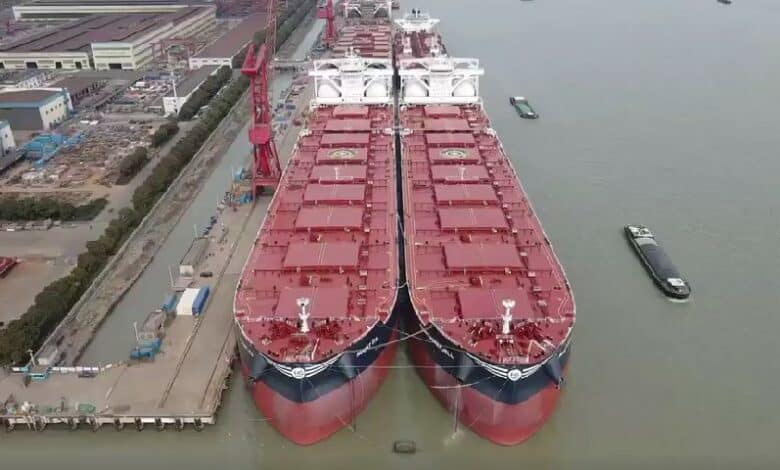Historic Growth in Capesize Fleet Reaches Milestone
Cape fleet surpasses 2,000 ships for first time, doubling in size since 2010

For the first time ever, the global fleet of capesize ships has surpassed 2,000, doubling in size over the past 14 years. According to broker Arrow, as of this month, the total number of capesize vessels is 2,002, with a combined deadweight tonnage (dwt) of 397 million. This fleet includes Very Large Ore Carriers (VLOCs), newcastlemaxes, standard capes, and mini-capes, spanning a dwt range from 130,000 to 400,000.
The detailed breakdown of the capesize fleet shows 265 VLOCs, 496 newcastlemaxes, 1,098 standard capes, and 143 mini-capes. Despite this growth, the fleet is aging, with the average ship age now at 11.0 years, up from 7.1 years in 2013 but still below the peak of 11.9 years in 2008.
A significant trend highlighted by Arrow’s analysts is the increasing preference for newcastlemax designs since 2014. There have been approximately 420 newcastlemax contracts compared to 290 for standard capes, leading to a doubling of the newcastlemax fleet from 204 ships to over 496. This preference is partly due to the minimal price difference between capes and newcastle maxes and a strong push from Chinese shipyards for newcastlemax orders.
OceanScore analysis shows near-tripling of EU ETS costs due to Red Sea crisis
The growth of the newcastlemax orderbook was also debated at this year’s Geneva Dry with William Fairclough, managing director of Wah Kwong Maritime Transport Holdings, pointing out that the newbuild price differential between capes and newcastlemaxes was just $2m to $3m, and that Chinese yards in particular were pushing for newcastlemax orders over standard capes.
At the recent Geneva Dry conference, industry leaders discussed the benefits of newcastlemax ships. William Fairclough, managing director of Wah Kwong Maritime Transport Holdings, noted the small price differential, while John Michael Radziwill, CEO and chairman of C Transport Maritime, praised the flexibility of the 180,000 dwt ship types.
The capesize segment’s remarkable growth and evolving preferences underscore its critical role in global maritime trade.
